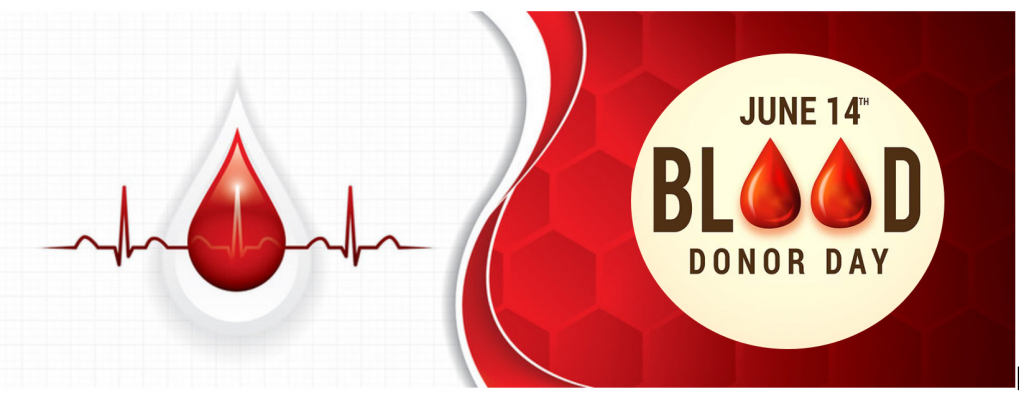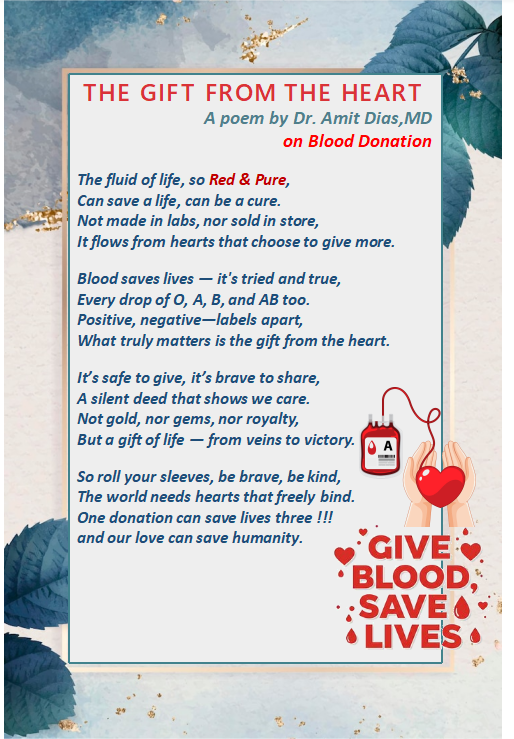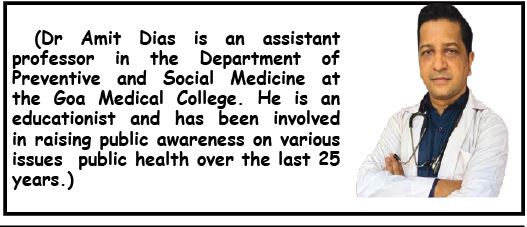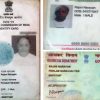Goa is abuzz with excitement as vintage bike and car owners, users, collectors and fans are decking […]

GIVE BLOOD, GIVE HOPE TOGETHER WE SAVE LIVES
June 21- June 27, 2025, MIND & BODY, HEART & SOUL June 20, 2025Q&A with DR AMIT DIAS On World Blood Donor Day
“Superheroes don’t always wear capes—sometimes, they just roll up their sleeves and donate blood,” says Dr Amit Dias, MD, as we speak to him on the occasion of World Blood Donor Day, observed annually on June 14. In this inspiring interview he shares powerful insights with a motivational message and a poem — reminding us that hope flows through every donated drop, carrying us from veins to victory.
Goan Observer: Why is Blood Donor Day observed on June 14?
Dr Amit Dias: June 14 is the birthday of Karl Landsteiner, the Nobel Prize-winning scientist who discovered the ABO blood group system in 1901. His discovery revolutionized medicine and made safe blood transfusions possible. The WHO chose this date to honor his contribution and promote voluntary, unpaid blood donation worldwide to meet the need.
Q: What is the need or demand for blood in the world?
A: According to the World Health Organization (WHO), every 2 seconds, someone in the world needs blood. The theme for blood donor day this year is – Give Blood, Give Hope: Together we save lives.
If you look at the statistics, more than 118 million blood donations are collected globally each year, but the demand often outstrips supply, especially in low- and middle-income countries. Blood is needed for surgeries, accidents, cancer treatment, childbirth complications, and people with chronic diseases like Thalassemia. We spoke about this in detail on World Thalassemia day.
Q3. We heard about blood groups. What exactly are they?
A: To simplify we classify blood into four main groups: A, B, AB, and O, based on the presence or absence of antigens. People cannot receive blood unless its matched for their blood group. This system as I mentioned earlier, was discovered by Karl Landsteiner in 1901. The Rh factor (positive or negative) was discovered later by Landsteiner and Wiener in 1940. So, a person’s blood type could be A+, O–, AB+, etc. We have to keep this in mind when we transfuse blood.
Q4: What exactly is the Rh factor?
A: The Rh factor is Rhesus factor – a protein found on red blood cells. If you have it, you’re Rh-positive; if not, you’re Rh-negative. This is crucial in pregnancy and transfusion—mismatched Rh factor can lead to complications.
Q5: What happens when one agrees to donate blood?
A: Here’s how the system works:
Registration & brief health check: weight, BP, hemoglobin, etc.
You will be counseled and consent will be taken.
The donation takes around 10 minutes, drawing about 350–450 ml of blood.
You rest, get a refreshment, and go home feeling good.
You could also donate blood at the camps held by the Directorate of Health Services or GMC.
Q6: Who is eligible to donate blood?
A: The donor should fulfill the following criteria
Age: 18–65 years
Weight: At least 50 kg
Hemoglobin: Minimum 12.5 g/dl
Healthy lifestyle
No recent tattoos, piercings (last 6 months), or high-risk behaviors like high risk sexual exposure, use of unsafe syringes etc.
No history of transmissible diseases (HIV, hepatitis, etc.)
Q7: Who is NOT eligible to donate blood?
A: The ones who do not meet the eligibility criteria are not accepted as donors. This includes;
Underweight individuals
Pregnant or lactating women
People with chronic illnesses like HIV, hepatitis B/C, cancer, uncontrolled diabetes
People on certain medications or who’ve had recent surgery or vaccinations etc.

Q8: How often can a person donate blood?
A: Men can donate every 3 months while Women can donate every 4 months. This allows the body time to replenish red blood cells. In most settings, the volume of blood taken is 450 milliliters, less than 10 per cent of your total blood volume since the average adult has 4.5 to 5 litres of blood. Your body will replace the lost fluid within about 36 hours. Healthy adults can safely give blood twice a year. Your local blood service can provide further details based on their SOP.
Q 9: Is it safe to donate blood?
A: Absolutely!! Donors may just feel slightly dizzy or tired, but serious side effects are rare. Sterile equipment is used. The body replaces the lost volume within 24–48 hours, and red cells in 2–4 weeks.
Q10: That’s reassuring but is donated blood safe? What tests are done?
A: Yes, care is taken to ensure that it is safe. That’s the reason for screening and checking the donor before accepting blood. Every unit is tested for: HIV, Hepatitis B & C, Syphilis, Malaria to rule out infections.
Only blood that passes all tests is used. Blood banks follow stringent WHO and national guidelines. However in order to be safe doctors make sure they do not give blood for trivial reasons. For example if you need just one pint of blood, then it means you could have managed without it.
Q11: What should be done on blood donor day?
A: Obviously encourage blood donation not only on the day, but all through the year. As I mentioned earlier, there is huge demand for blood in various conditions. There is no substitute for human blood. One donation can save up to three lives. It also benefits the donor—people who donate regularly often monitor their health better and experience a sense of fulfillment. I have donated blood myself and it’s a good feeling. People donate blood on a regular basis – once or twice a year.
Q12: What advice would you give to someone who is going to donate blood?
A: Please do not hesitate, go ahead, The team at the blood bank will assist you. Keep this in mind:
Rest for 10–15 minutes
Reply to the questions asked truthfully
Drink fluids, have a healthy snack
Avoid heavy lifting or intense exercise that day
If dizzy, lie down with feet elevated
Q13: How long does the entire blood donation process take?
A: From registration to rest, it may take around 30–45 minutes, but the actual donation lasts just 8–10 minutes !!
Q14: And how long does it take to replace the donated blood?
A: Plasma is replaced in 24 hours, red cells in about 2–4 weeks, and hemoglobin in 6–8 weeks. The body is incredibly efficient!! You will get back fresh stores.
Q15: What is your message to our readers?
A: Let’s build a community where giving blood is a habit, not a heroic act. The need is constant, and the gratification is instant. Let is start from today, Once you read this article, if you’re eligible, walk into a blood bank and walk out a lifesaver.
















